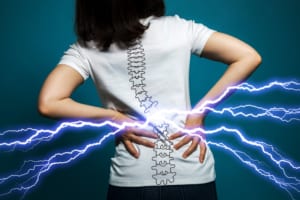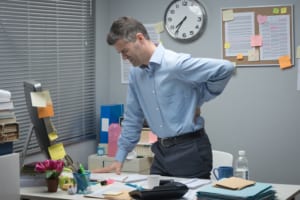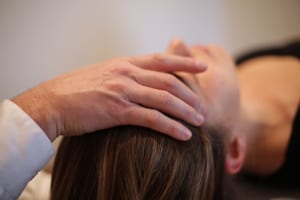A recent report by The Institute for Public Policy Research (IPPR), found that rising NHS waiting times are prompting one in six to consider private healthcare if they have to wait longer than 18 weeks for care.
This is borne out by what experienced Osteopath, Robin Kiashek, is seeing in clinic.
Robin says: “I’m seeing an increasing number of patients who may not have previously considered paying for private Osteopathy. But they are doing so now because the NHS waiting time they have been given is unacceptable to them.
In theory this should be good news for the NHS – pressure off lists. And good news for the patient – quicker access to treatment.
Disgruntled patients
But not so much in practice. The first thing that Robin must do is to unpick these patients’ disgruntled feelings around no longer being able to quickly and easily access treatment on the NHS for free.
Robin says: “I understand that this is a change to what we’re used to. But patients quite clearly feel aggrieved. Not at having to pay for my services necessarily but at having to pay for treatment that they believe should be free. And this manifests itself in two ways. They are generally quite cross at our first consultation, and they believe that I should be able to ‘fix’ them in the minimum number of sessions. None of which is terribly conducive to their recovery.”
We’ve written before about the need to be a patient patient. Previously this centred around patients being reluctant to commit the necessary time to recovery. Instead forging on with strenuous exercise programmes. But now the focus is around a perception of value.
As Robin explains: “If an NHS therapist were to recommend six or eight sessions of therapy to bring you to recovery then I doubt many patients would ask if that could be achieved with less sessions.”
Robin tries to encourage patients to focus on what they are getting. Rather than where they feel they might be missing out.
Initial consultation
At an initial consultation Robin takes a detailed case history including full medical background, information about your symptoms, health problems and any medical care you have been receiving. This is usually followed by a physical examination, You will be asked to undergo various movements in a bid to reproduce your symptoms. Robin will use a combination of visual analysis and touch (or palpation). He may also use orthopaedic tests and occasionally refer for further x-ray or MRI investigation to help form a diagnosis.
Follow up treatment
Once you have a diagnosis, Robin will provide a full explanation and treatment plan. A treatment will be included in the initial Osteopathic consultation, assuming it’s safe to do so.
Robin adds: “I take a more holistic approach when it comes to treating musculoskeletal disorders relating to muscles, ligaments, joints, nerves, cartilage, tendons and the general skeletal system. I’ll also identify underlying causative factors. So I can work with you to help heal your specific condition/s and work towards preventing this from reoccurring.”
And that’s not all
Robin generally spends around 45 minutes at an initial consultation and 30 minutes on follow up appointments. He can’t promise to run exactly to time but he’s not yet left a patient sitting in his waiting room long past their appointment time. And you get to see the same person – Robin – at every consultation. So there is excellent continuity of care.
The last word goes to Robin: “Patients who work with me are extremely kind with their positive feedback. I do understand that we’d all rather be able to access treatment quickly and for free on the NHS. But I believe that complementary therapists in the private sector have a vital role to play in healthcare in the 21st century.”
So, if you’re languishing on a waiting list or struggling with ongoing pain then please do get in touch.



 For me, within a clinical setting, I like to use the analogy of ‘The Dripping Tap Syndrome’. People will often have a small twinge or niggle of pain (a dripping tap over a glass scenario) which progressively starts to irritate that little bit more frequently (the glass starts to fill up). This can be over a period of weeks, months or even years. The analogical drip ultimately starts happening more often until eventually the final drop causes the glass to overflow and the patient experiences a significant increase in pain (commonly known as ‘acute’ pain). This ‘final drop’ can be an everyday event – maybe a sneeze, bending forward, a certain slight move etc
For me, within a clinical setting, I like to use the analogy of ‘The Dripping Tap Syndrome’. People will often have a small twinge or niggle of pain (a dripping tap over a glass scenario) which progressively starts to irritate that little bit more frequently (the glass starts to fill up). This can be over a period of weeks, months or even years. The analogical drip ultimately starts happening more often until eventually the final drop causes the glass to overflow and the patient experiences a significant increase in pain (commonly known as ‘acute’ pain). This ‘final drop’ can be an everyday event – maybe a sneeze, bending forward, a certain slight move etc Ultimately I take a holistic approach to any health issue and, to go back to the analogy, find out why that dripping tap first occurred. As somebody who has undertaken extensive training from Osteopathy and Naturopathy, Post graduate studies in NeuroLinguistic Programming (NLP)/Life Coaching, Western Acupuncture, The Perrin Technique for Chronic Fatigue Syndrome and Low Level Laser Therapy.
Ultimately I take a holistic approach to any health issue and, to go back to the analogy, find out why that dripping tap first occurred. As somebody who has undertaken extensive training from Osteopathy and Naturopathy, Post graduate studies in NeuroLinguistic Programming (NLP)/Life Coaching, Western Acupuncture, The Perrin Technique for Chronic Fatigue Syndrome and Low Level Laser Therapy.